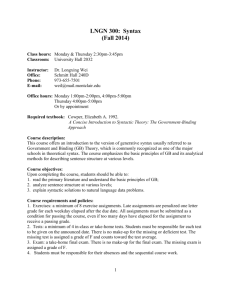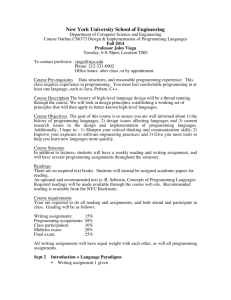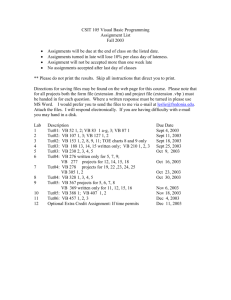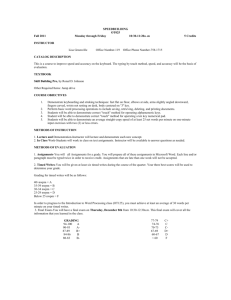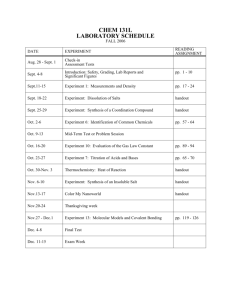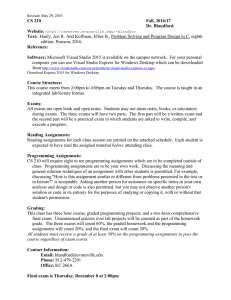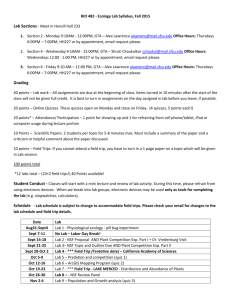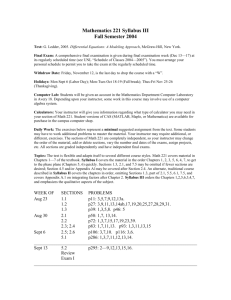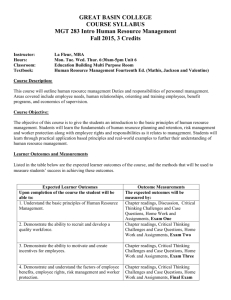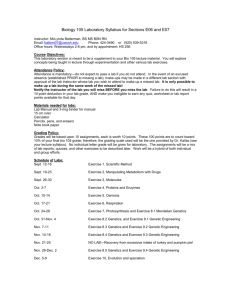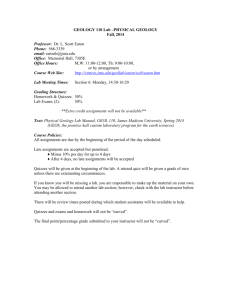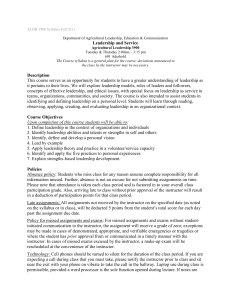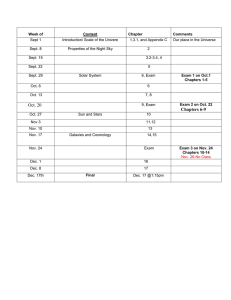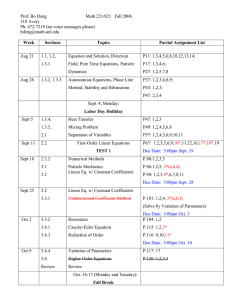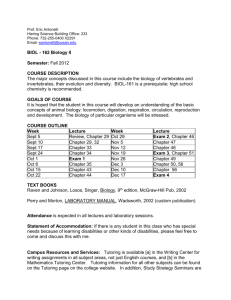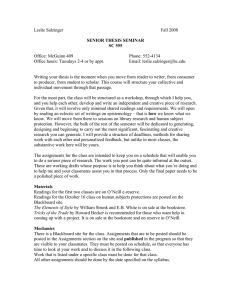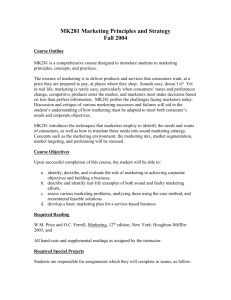APLN504-Syntax
advertisement
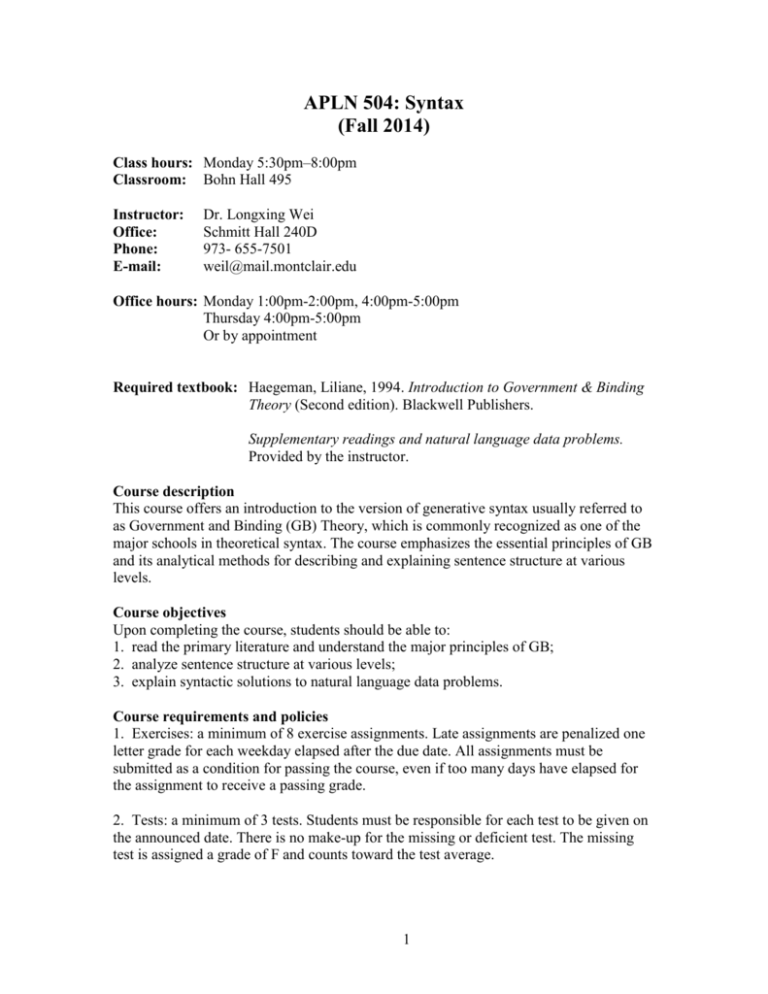
APLN 504: Syntax (Fall 2014) Class hours: Monday 5:30pm–8:00pm Classroom: Bohn Hall 495 Instructor: Office: Phone: E-mail: Dr. Longxing Wei Schmitt Hall 240D 973- 655-7501 weil@mail.montclair.edu Office hours: Monday 1:00pm-2:00pm, 4:00pm-5:00pm Thursday 4:00pm-5:00pm Or by appointment Required textbook: Haegeman, Liliane, 1994. Introduction to Government & Binding Theory (Second edition). Blackwell Publishers. Supplementary readings and natural language data problems. Provided by the instructor. Course description This course offers an introduction to the version of generative syntax usually referred to as Government and Binding (GB) Theory, which is commonly recognized as one of the major schools in theoretical syntax. The course emphasizes the essential principles of GB and its analytical methods for describing and explaining sentence structure at various levels. Course objectives Upon completing the course, students should be able to: 1. read the primary literature and understand the major principles of GB; 2. analyze sentence structure at various levels; 3. explain syntactic solutions to natural language data problems. Course requirements and policies 1. Exercises: a minimum of 8 exercise assignments. Late assignments are penalized one letter grade for each weekday elapsed after the due date. All assignments must be submitted as a condition for passing the course, even if too many days have elapsed for the assignment to receive a passing grade. 2. Tests: a minimum of 3 tests. Students must be responsible for each test to be given on the announced date. There is no make-up for the missing or deficient test. The missing test is assigned a grade of F and counts toward the test average. 1 3. Exam: a final exam. There is no make-up for the final exam. The missing exam is assigned a grade of F. 4. Students must be responsible for their absences and the sequential course work. Evaluation and grading The exercise assignment average, the test average, and each exam count toward the final course grade. Failure to fulfill any of the course requirements will result in a final grade of “F”. Class participation (in-class discussion, performance and activities) is included in the evaluation of the student’s course work. 8 exercise assignments 3 tests Final exam Class participation 40% 30% 20% 10% Exercises, tests, and exams are graded based on the following letter scale: A 100-93, A- 92-90, B+ 89-86, B 85-83, B- 82-80, C+ 79-76, C 75-73, C- 72-70, D+ 69-66, D 65-60, F 59- Tentative weekly syllabus Note: 1. Each exercise assignment is due on the class day of the following week. 2. If necessary, the instructor will select only certain sections or parts of a listed chapter and announce them in advance. 3. The following schedule is subject to change with prior notice as class needs dictate. Week 1 (Sept. 8) Introduction: The Chomskian Perspective on Language Study Week 2 (Sept. 15) Introduction (continued) Chapter 1: The Lexicon and Sentence Structure Week 3 (Sept. 22) Chapter 1 (continued) Assignment 1 Week 4 (Sept. 29) Chapter 2: Phrase Structure Week 5 (Oct. 6) Chapter 2 (continued) Assignment 2 Test 1 2 Week 6 (Oct. 13) Chapter 3: Case Theory Week 7 (Oct. 20) Chapter 3 (continued) Assignment 3 Week 8 (Oct. 27) Chapter 4: Anaphoric Relations and Overt NPs Assignment 4 Test 2 Week 9 (Nov. 3) Chapter 5: Non-overt Categories: Pro and Control Assignment 5 Week 10 (Nov. 10) Chapter 6: Transformations: NP-Movement Assignment 6 Week 11 (Nov. 17) Chapter 6 (continued) Assignment 7 Week 12 (Nov. 24) Chapter 7: WH-Movement Assignment 8 Week 13 (Dec. 1) Chapter 7 (continued) Test 3 Week 14 (Dec. 8) General review Week 15 (Dec. 15) Final exam 3
